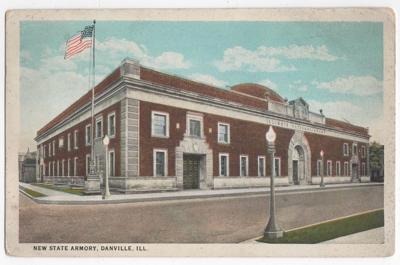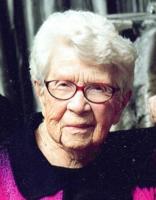Danville has lost many landmarks: almost every building from Lincoln’s time here, plus the Cannon home, the Baum Building, the old Elks Club, St. Patrick’s Church, the Temple, Cannon School, Washington School … the list could go on.
Among the survivors, thankfully, is the former Illinois National Guard Armory, 135 N. Hazel St. Beautifully designed and built, as stout as a fortress and rich in history, it opened 100 years ago this month.
“Danville’s New Armory One of Finest of Its Kind in the Middle West” read the headline in The Commercial-News’ special dedication day edition of Feb. 12, 1923.
A small, $10,000 armory on Walnut Street served the state militia from 1881 until 1923. Danville’s Battery A, 1st Illinois Artillery Regiment, formed in 1876, sent scores of soldiers to the Spanish-American War. Its Battery A, 149th Field Artillery Regiment, saw heavy combat in World War I. Danville also was home to a machine gun battalion.
Starting in 1923, various National Guard units met and trained in the Armory. They served during World War II, Korea, Vietnam and the Persian Gulf War. Local Guardsmen also assisted in peacetime, during floods, riots and other emergencies. The present National Guard building at the county airport replaced the Hazel Street Armory in the 1990s.
A bill to fund the Armory building was introduced by State Rep. William Holladay before World War I. Of 27 proposed armories, Danville’s was one of two actually funded. State Architect Edgar Martin supervised the project; Danville’s Herman Krauel was the general contractor.
And what a big, brawny, impressive structure it is. Two stories tall, with 28,534 square feet of space, it features elaborate brickwork and hand-carved limestone atop a concrete foundation. Windows are protected by iron bars. Carvings include the Illinois state shield, crossed cannons and crossed Model 1903 bolt-action rifles. Building corners are strengthened by blocks of cut stone. The brick parapet features more stonework, a federal shield and four ball-shaped finials.
The building, when new, featured a drill hall, with 40-foot ceiling, 85 feet wide and 125 feet long. The second-floor banquet room measured 99 feet by 70 feet, with a stage. There were office rooms, storage rooms, kitchens and showers and locker rooms.
But the Armory was more than a place to drill and store guns and gear. As Danville’s largest public gathering space, it hosted political events, dances, boxing matches, basketball games, gun shows, home shows, Scout-o-Ramas, the Policemen’s Ball and craft bazaars. Danville Junior College used its drill floor for a gym.
The building was designated a Danville City Historic Landmark in 1999. At that time, historians deemed it “a fine example of the Neo-Classical style” and eligible for the National Register of Historic Places.
Despite a few signs of neglect, at age 100 the Armory remains an architectural masterpiece and one of Danville’s most historic buildings.













Commented
Sorry, there are no recent results for popular commented articles.